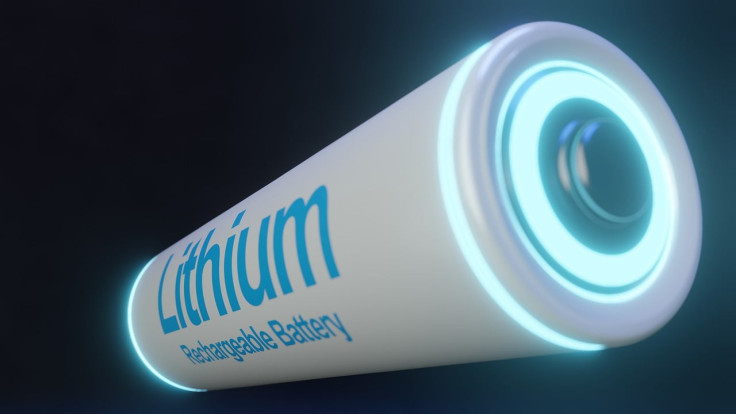Forget Lithium: Microsoft Unearths Game-Changing Battery Material Using AI
Microsoft and Pacific Northwest National Laboratory (PNNL) have joined forces to reduce the use of lithium in batteries by up to 70 per cent.

In collaboration with with Pacific Northwest National Laboratory (PNNL), Microsoft has identified new material that can come in handy for developing resource-efficient batteries.
As part of the collaboration, Microsoft applied advanced AI, coupled with expertise from PNNL to find new battery material that's not present in nature, according to a blog post by Dr. Nathan Baker, a Product Leader at Azure Quantum Elements, Microsoft.
The market is currently teeming with lithium-based batteries, which are prone to explode and catch fire. Taking a major step towards addressing the issue, Microsoft and PNNL have found an alternative for lithium-ion batteries, according to a separate blog post by Microsoft's Catherine Bolgar.
How Microsoft found a potential new battery material using #AI
— Marsha Collier (@MarshaCollier) January 10, 2024
⚡ They discovered a new kind of solid-state electrolyte, the kind of material that could lead to a battery that’s less likely to burst into flames than lithium-ion batteries#tech via @Vergehttps://t.co/5Vx6yKoqIR pic.twitter.com/dSZuUSfreJ
"Our breakthrough in using AQE (Azure Quantum Elements) to find new battery materials is just one of the many examples of how our innovative approach to materials research can improve our daily lives," said Jason Zander, Executive Vice President of Strategic Missions and Technologies at Microsoft.
The newly discovered material is a solid-state electrolyte, which means it is less likely to burst and cause a fire. In other words, it poses less risk. Aside from this, the scientists' findings suggest the material will play a key role in bringing the use of lithium in batteries down by a significant 70 per cent.
The future of lithium-ion batteries
There are no prizes for guessing that this discovery is an incredible feat. However, it is worth noting that there's still a considerable amount of work and testing that needs to be done.
Nevertheless, scientists are happy with the presence of generative AI, which is capable of not only simplifying but also expediting the whole process.
PNNL researchers are currently testing Microsoft's Azure Quantum Elements platform's ability to identify promising new materials for energy applications, Senior Science Communicator and Media Relations Advisor Karyn Hede pointed out in a blog post on PNNL's official website.
On the downside, the recently found solid-state electrolyte is not as good as liquid electrolytes when it comes to conducting energy. However, scientists are sparing no effort in a bid to find a solution to this problem.
"The big point to make is the speed by which we got to a new idea, a new material. If we can see that kind of acceleration, my bet would be on that this is the way of the future to find these kinds of materials," Karl Mueller, a physical chemist and program development office director at PNNL said.
Notably, scientists carefully went through 32 million potential materials before narrowing down the list to 18 in less than a week using AI technology. This process would have normally taken them more than 2 decades if they relied on traditional methods to sieve through these materials.
According to Krysta Svore, lead at Microsoft Quantum – Redmond (QuArC) group at Microsoft Research, it is imperative to compress the next 250 years of chemistry material science into the next 2 decades if we want to save our planet.
In her post on the company's official website, Svore further noted that scientific discovery can be accelerated with the help of AI and high-performance computing. Following in the footsteps of other big tech companies, Microsoft has made significant headway in using AI to enhance people's lives.
In line with this, the software giant recently announced that it will spend $3.2 billion (£2.5 billion) to create a large AI infrastructure in the UK. Last year, Microsoft's CEO Satya Nadella warned the technology should be used to help people rather than replace them.
Can we really depend on Lithium-ion batteries for long?
Batteries that power most electronic devices like smartphones and electric vehicles are based on lithium. Regrettably, the demand for the product doesn't align with its actual supply.
In fact, the US Department of Energy claims the demand for lithium-ion batteries could hit an all-time high by 2030 (up to 10 times the current demand). So, it is safe to say that we might soon run out of the resource.
Manufacturers are currently building more battery plants to match the increasing demand for batteries, but this is negatively impacting the environment since the sourcing process of the material requires a lot of water and energy, as reported by the BBC.
It is fortunate that scientists still have about seventeen potential materials to choose from as a perfect replacement for lithium. They can also take advantage of generative AI and high-performance computing to make the process faster and less complicated.
© Copyright IBTimes 2024. All rights reserved.






